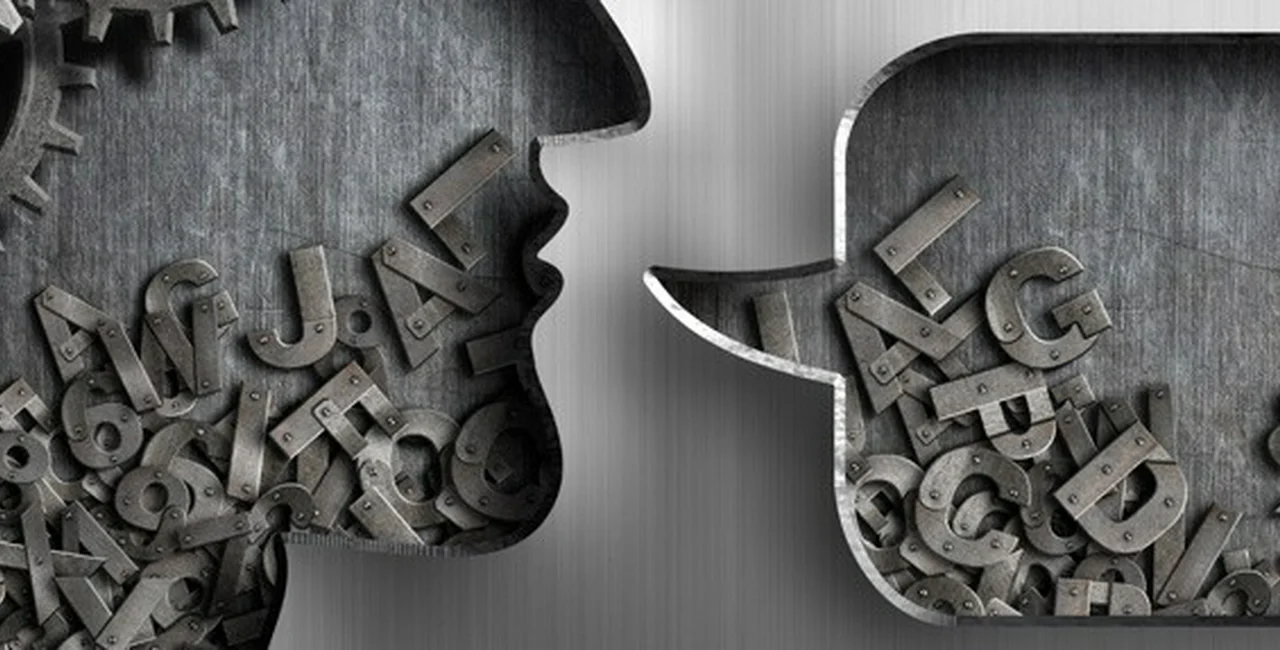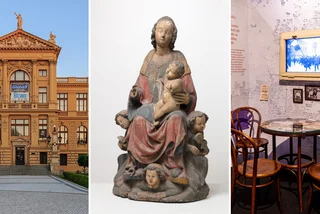History
The first Jews came to Prague in the ninth century, probably from modern-day Iraq. The early settlers were merchants, and almost certainly came at the invitation of the Bohemian kings to bolster trade links. At first Jews lived on both sides of the river, but by the late 11th century a more tightly knit Jewish town emerged in Staré Město, probably as a result of anti-Semitic attacks. In the 13th century, Rome decreed that Jews and Christians live separately, and the ghetto was walled in. It was originally shaped like a dumbbell, with Persian Jews living in one circle, German Jews in the other, and what is now Maiselova Street running between.
Life in the ghetto was controlled by numerous laws and decrees. Jews wore identifying caps or badges, were allowed to work only as usurers or rag merchants and were forbidden from owning land. There were a number of attacks on the ghetto; the worst was the 1389 Pogrom, in which 3,000 Jewish people were murdered by their Christian neighbors over Easter weekend.
During the reign of Rudolf II (1576-1612), Jewish culture blossomed under the emperor´s policy of religious toleration. The Jewish Town Hall, Maisel Synagogue and High Synagogue were built; gifts to the ghetto from its wealthiest son, Minister of Finance Mordechai Maisel. At the same time, Rabbi Löw, chief rabbi of Prague, was studying the mystic teachings of Kabbalah and, according to legend, building the Golem. In 1648 the Jewish community won the favor of Ferdinand III when they repelled the invading Swedish army on the Charles Bridge. Ferdinand enlarged the ghetto in gratitude. A century later Maria-Theresa (1740-80) sent the entire Jewish population of Prague into exile, but welcomed them back three years later when her ministers noticed the deficit in the tax system
Enlightened emperor Joseph II (1780-90) took the biggest step towards granting equal rights to Jews. His 1781 Edict of Tolerance gave non-Catholics the right to education, ended the compulsory dress code and opened the ghetto´s gates. A century later the Jewish community honored Joseph by renaming the ghetto Josefov. As richer Jewish families left the ghetto, Prague´s poorest inhabitants moved in. The area became a slum, and in 1893 the city authorities razed most of the ghetto and constructed the Art Nouveau Josefov of today.
From its founding in 1918, Czechoslovakia promised full civil rights to its Jewish population. While still a university professor, Tomáš Garrigue Masaryk, later first president, defended Jewish civil rights during the Hilsner Trial, in which a Jewish man was charged with murdering a Catholic woman on trumped-up charges. At his election, Masaryk echoed George Washington´s promise to American Jews, saying that in Czechoslovakia there would be only one class of citizen. His friendly attitude to the Jewish people was continued by his successor Eduard Beneš, an early supporter of Israel.
On March 15th 1939, Nazi troops occupied Prague. Jews were barred from work and school, required to wear identifying badges and forbidden from leaving the ghetto. In November 1941 the first transport left Prague for Terezín, 60km to the northwest. Three quarters of the 55,000 Jews living in Prague at the time of the occupation were murdered or starved to death in the camps. Of those who lived, many emigrated to Israel or the United States.
In the communist era intolerance towards any form of religion, coupled with institutionalized anti-Semitism, led to a further dwindling of Jewish culture. However, unlike in most of the rest of the Soviet Bloc, the Synagogues were open, though there was a Secret Service official at the door. Since the Velvet Revolution the Jewish community has been undergoing a gradual rebirth.
Contemporary Jewish Culture
“I remember listening to tour guides in the Jewish Quarter in the early 90s saying ‘The Jews worshiped here, lived here and ate there,´ and I thought ‘wait a minute – we´re not dead stones in the cemetery, we´re still here!´”
That statement is from Sylvie Wittmann, owner of the first Jewish tour company in Europe, founder of the Bejt Simcha Reform congregation and president of the Czech Reform Jewry Federation; herself proof that Prague´s Jewish community is very much living. “We have to remember the Holocaust, and the negative parts of our history,” says Ms. Wittmann. “But Judaism is about the present and the future, not just the past. Every day the Jewish community here has something new to show.”
There are roughly 6,000 Jewish people living in Prague today, and 1,800 are active members of the Jewish community. Since the fall of the Iron Curtain the average age in the community has dropped every year. “We are seeing lots of bar mitzvahs and marriages, and lots of conversions,” says Rabbi Hoffberg, a conservative rabbi with the Masorty Olmaj congregation.
Rabbi Hoffberg tells the story of a Czech Jewish woman who was in a concentration camp as a child. After the war, she returned to Prague and married a non-Jewish Czech man. Because she was afraid of a second holocaust, the woman concealed the fact that she was Jewish from her husband and daughter. Years later, she told her young grandson, who became interested in Judaism. When the boy saw Jewish children on their way to synagogue, he followed them and told the rabbi he wanted to join the service. “I met the grandmother at the little boy´s bar mitzvah. She told me that it was the first time she had been into a synagogue since 1941,” says Hoffberg. “People are finding their way back to Judaism.”
Jewish worship in Prague is denominational, like everywhere else. “Twenty years ago, when we were living in the shadow of Communism, the community was like a big family,” says Wittmann. “But now we quarrel between ourselves like religious denominations everywhere.”
The conservative group, Masorti Olami (www.masorti.cz) is led by American rabbi Ron Hoffberg, who conducts services in English and Hebrew. Bejt Simcha, in English ‘House of Joy,´ is Prague´s reform congregation. Their first rabbi, Joan Freedman, was also an American. Although present rabbi Tomaš Kučera is Czech, Bejt Simcha is English-language friendly.
For splendid surroundings, the Orthodox congregation wins hands down. Services are either held at the 700 year-old Staronová Synagoga (Old New Synagogue) or the 400 year-old synagogue at Židovská radnice (Jewish Town Hall). Orthodox services are in Hebrew and Czech, but when I attended Friday night service many non-Czechs were present and parts of the service were translated into English, though the translator mumbled and not much was audible through the small windows of the women´s gallery.
To view a synagogue without going to a religious service; book a guided tour or go to one of the concerts regularly held in the Jewish Quarter. The Španělská synagoga (Spanish Synagogue) is a popular music venue, and the exquisite gilded interior and Moorish design make it one of the most beautiful religious buildings in the city. Information on concerts is available here.
In the last ten years, the visibility of Judaism in the Czech Republic has rapidly increased. “I have seen a growing interest in Judaism, Israel and the Hebrew language here,” says Israeli Ambassador Jaakov Levy. This is hardly surprising, Ambassador Levy points out, when you consider a thousand year shared history and “a live and vibrant Jewish community whose rich cultural, religious and social contribution enriched the region.”
Symptomatic of this increasing interest in Judaism is the wide array of educational programs and events on offer in Prague. The Jewish Education and Culture Centre, which receives funding from the Czech Ministry of Education, Youth and Sports, provides education about Judaism and Jewish culture in the Czech lands. The main body of their work is training teachers, but there are also four evening programs a week which include lectures, classes, book discussions and film screenings. Bejt Simcha (see above) runs an Introduction to Judaism course on Saturdays, a Wednesday evening study group, two and three day seminars on a range of Jewish-related subjects, as well as Ivrit and Classical Hebrew classes. Jewish and in particular Israeli drama and dance have an increasing presence in Prague. A useful resource for information on events is the Israeli Embassy website.
Ten years ago there was one kosher restaurant in Prague, which was aimed at tourists. Now there are four kosher restaurants, and their popularity with locals can be witnessed at Sabbath dinner every Friday night. Located opposite the Pinkas Synagogue, King Solomon (www.kosher.cz) is the oldest of the four, and serves rich Middle European Jewish food and kosher wine in austere stone-clad surroundings. Tables for the Sabbath (either dinner on Friday or lunch on Saturday) have to be booked in advance by filling out an online order form, and there is also a takeaway service. Dinitz (www.dinitz.cz), tucked behind Španělská synagoga, is a kind of Israeli-Middle Eastern-Mediterranean fusion restaurant. Bookings should be made a week in advance, particularly for Friday (for which there is a flat-rate for four courses) or Saturday. Shalom Kosher Restaurant is run by the Prague Jewish Community and located inside the Jewish Town Hall. At 450 CZK, the daily menu is not cheap, but it includes three courses, salad and coffee. Also in Josefov, Shelanu (www.shelanu.cz) is a cafe and deli, with dinner daily, offering simple kosher food. There is a salad bar and Shelanu´s specialty is pareve (dairy-free) ‘milk´ shakes. Kosher food can be bought online at King Solomon (www.kosherfoodonline.cz).
One of the best ways to get a sense of Prague Jewish history is to walk through Josefov, either alone or with a tour. Wittmann Tours (www.wittmann-tours.com) specializes in Jewish tours, offering daily walks through Josefov, as well as to sites of Jewish interest throughout the Czech Republic (and indeed Central Europe). Prices are high, with a tour of the Jewish Quarter costing 880 CZK per person, but Wittmann´s guides are extraordinarily knowledgeable, even including a lecturer in Jewish History from Charles University.
The museums in Josefov come under the umbrella of the Jewish Museum (www.jewishmuseum.cz), which manages six sites. The permanent exhibitions at the Španělská synagoga contain photos of the old ghetto before it was demolished and a section on Prague´s Jewish writers, including Franz Kafka. Housed on the first floor, the zimní synagoga (winter synagogue) houses an exhibition of silver religious artifacts. Pinkasova synagoga was converted into a chilling holocaust memorial in the 1950s. The name, birth dates and date of transportation of each of the 77,297 Czech Jews murdered in the Holocaust are inscribed on the walls. Upstairs is an exhibition of drawings by children in Terezín, most of who later died in Auschwitz or other camps. At Obřadní síň (Ceremonial House), a former mortuary located near to the cemetery, there is an exhibition on Jewish customs and burial traditions, and Klausová synagoga contains a display of religious artifacts. The fanciful baroque Maiselova Synagoga houses an interesting exhibition on the early Jewish settlers in Bohemia and Moravia.
Jewish people in the Czech lands have touched the national culture in a way that is unique in central Europe. Rabbi Hoffman points out that when the Town Hall was built at the turn of the last century, the stonemasons chose the figure of a rabbi to represent Czech faith. “The Jews and the Czechs have a long and close history,” he says. “It is a pleasure to see that Prague is taking back its place in the world as a leading Jewish community.”












 Reading time: 9 minutes
Reading time: 9 minutes 























